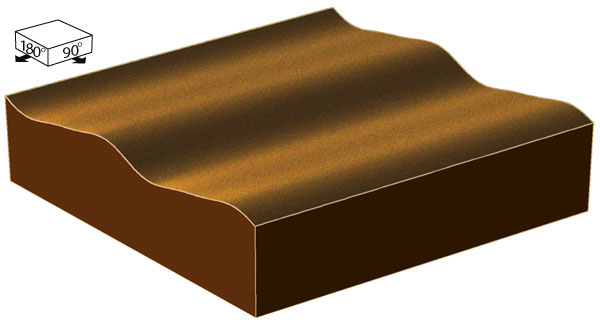Pacific Coastal and Marine Science Center
Bedform Sedimentology Site: “Bedforms and Cross-Bedding in Animation”


FIG. 10. Structure formed by a stoss-erosional and lee-erosional angle of climb.
RECOGNITION: This structure is purely erosional, and consequently is probably extremely rare. Preservation can occur when the rate of deposition increases, a similar situation to that shown in Figures 13 and 14. Bedform spacing is indicated by the spacing of undulations on the bounding surface.
ORIGIN: Where the rate of erosion approaches the rate of bedform migration, bedforms scour downward into the underlying substrate without accumulating sediment, even on their lee sides. As with the high positive angles of climb, formation of this structure requires exceptional circumstances: a flow that can erode sediment without causing bedform migration. In general, these conditions are favored by longitudinal bedforms and by flows that accelerate downcurrent. The downcurrent acceleration means that the flow is able to transport more sediment than it contains, and a longitudinal bedform trend tends to prohibit local deposition by eliminating or restricting sites where the flow decelerates over the bedform surface. Examples of this kind of structure occur in air and water. Yardangs are possible eolian examples, and sediment furrows that occur in the deep sea and in estuaries are possible subaqueous examples. Oscillation ripples that occur in an area undergoing erosion can also produce this structure (FIG. 11).